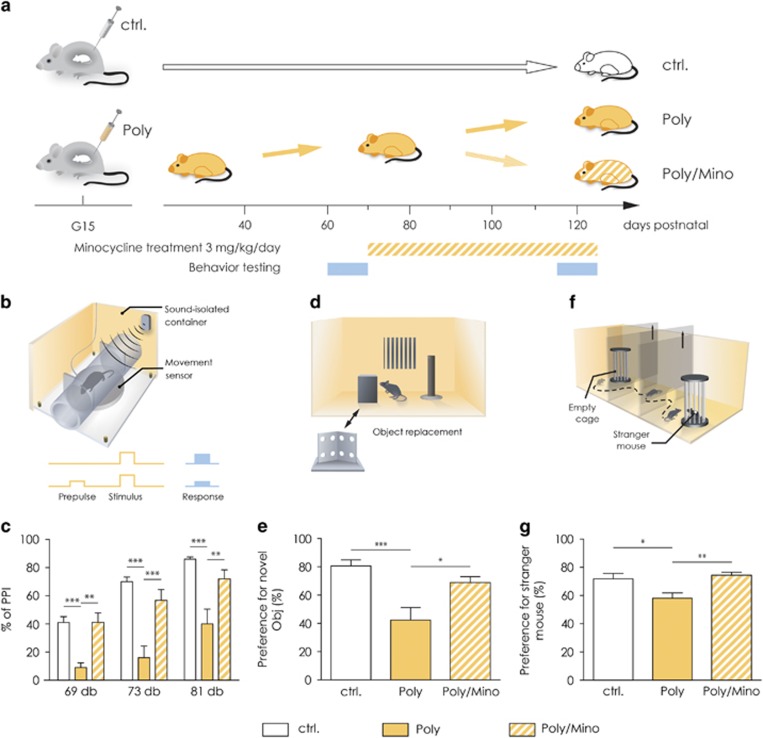Figure 1.
Poly(I:C) mice show correlates of positive, negative and cognitive symptoms, which are rescued by chronic minocycline treatment. (a) Representative image showing the experimental design. Pregnant dams were injected at gestational day 15 (G15) with either saline solution or Poly(I:C). The offspring was tested for behavioral deficits at postnatal day 60 (P60). Poly(I:C) animals were then subjected to minocycline treatment (3 mg kg−1 per day) for 5 weeks. They were then re-tested for the same behavioral battery at the end of the treatment. (b) Representation of the apparatus used for the prepulse inhibition test (PPI). (c) Part of the adult offspring of Poly(I:C)-challenged dams exhibited deficits in sensorimotor gating as measured through the PPI test for all three prepulses tested, (69, 73 and 81 dB prepulses). Minocycline treatment significantly restored the percentage of PPI for all three prepulses (n=7 Poly(I:C) mice before and after minocycline treatment and 14 controls). (d) Representative image of the apparatus used for the novel object recognition test. (e) Poly(I:C) mice showed working memory impairments in the novel object recognition task, displayed as a significantly decreased percentage of time spent making contact with a new object as compared with control animals. Five-week minocycline treatment significantly increased their ability to detect a novel object. (n=16 Poly(I:C) mice before and after minocycline treatment and 14 controls). (f) Representative image of the apparatus used for the sociability test. (g) Poly(I:C) mice display deficits in social behavior shown as decreased percentage of time spent making contact with a stranger mouse as compared with controls. Five-week minocycline treatment significantly restored a normal social pattern in these mice (n=16 Poly(I:C) mice before and after minocycline treatment and 14 controls). Error bars indicate s.e.m. in all the panels. The PPI data were analyzed by two-way analysis of variance (ANOVA) followed by Bonferroni post hoc test, while the novel object recognition test and the sociability data by one-way ANOVA followed by Bonferroni post hoc test. *P<0.05, **P<0.001, ***P<0.0001. Ctrl, control animals; dB, decibel; G15, gestational day 15; Obj, object; Poly, Poly(I:C) animals; Poly/Mino, Poly(I:C) animals treated with minocycline; PPI, prepulse inhibition.

